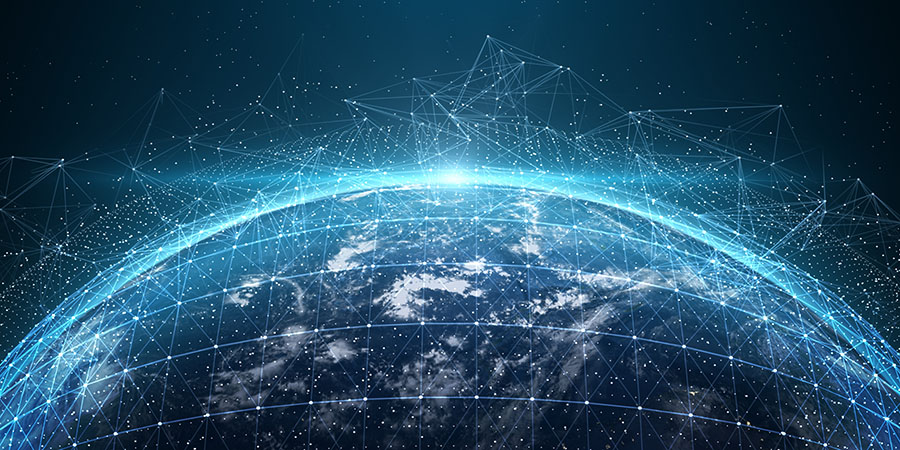In a world where technology evolves daily, there are now limitless possibilities. Numerous innovations continue to unfold along this endless path of progress. The Internet of Things (IoT) molds this evolving technological landscape, transforming the way in which people interact with their surroundings. While IoT devices are not yet implemented everywhere, they are poised to be ubiquitous one day, providing seamless connections across all areas, and all industries.
Today, leaders are dedicating their focus to space technology, which presents numerous opportunities. Lot of improvements have been made in this realm, such as direct to cell satellites and laser data transmission from space. However, the challenge persists in uncovering the unknown to unite not just industries but also communities. So, what impact could space technology have on IoT devices and networks? And how will it aid in reshaping the future?
The Interconnection of Physical Devices
The concept of the IoT involves integrating physical objects or environments with digital systems, enabling them to communicate and interact with each other. This integration extends beyond specific industries and encompasses a wide range of sectors, including agriculture, transportation, pipeline management, environmental, mining, and more. In essence, IoT technology bridges the gap between the physical and digital worlds, transforming everyday objects into interconnected smart devices.
Over the past few years, the IoT industry has witnessed exponential growth. This growth can be attributed to advancements in technology, increased connectivity, and the rising demand for automation and data-driven insights across various sectors. As a result, organizations and industries are increasingly adopting IoT solutions to streamline operations, enhance efficiency, and unlock new opportunities for innovation.
Key components of IoT implementation include robust network connectivity, sophisticated software systems, and sensors embedded in various objects or environments. These components work together to facilitate seamless communication and data exchange between IoT devices. For example, vehicles equipped with IoT sensors can collect and transmit real-time data detailing its location, performance, and surrounding conditions. Similarly, smart buildings can utilize IoT technology to monitor energy usage, optimize resource allocation, and enhance occupant comfort.
Navigating Challenges in the IoT Landscape
In addition to its numerous benefits, the IoT is encountering several challenges. Foremost among these is security, which is crucial for building user trust. The proliferation of connected devices increases the risks of cyber-security breaches and data breaches.
Furthermore, experts are focusing on enhancing the functionality and efficiency of IoT systems. The absence of standardized protocols for device communication poses a significant limitation in this regard.
Additionally, data management and scalability present difficult challenges. Efficient management becomes imperative to derive valuable insights from the vast amount of data generated by IoT devices. This necessitates the implementation of robust network infrastructure and efficient data processing systems.
Regulatory compliance is also a critical aspect, especially concerning industries utilizing artificial intelligence. IoT operations are subject to specific requirements, including industry-specific regulations and consumer protection laws.
Moreover, sustainability poses a significant challenge for IoT, particularly in terms of energy consumption and network management. Ensuring efficient energy usage and accommodating the growing number of interconnected devices are essential considerations in this regard.
Leveraging Space Technology to Enhance IoT Capabilities
Exploring the potential of space technology in advancing the IoT unveils numerous advantages and contributions to its progression.
Firstly, space technology eliminates the necessity for terrestrial towers. Utilizing space satellites, IoT devices can establish seamless connections, offering global coverage regardless of location. Moreover, satellites serve as reliable backup communication channels in the event of terrestrial network disruptions, ensuring uninterrupted connectivity.
In addition to connectivity, space-based remote sensing plays a pivotal role in optimizing IoT device operations. By providing real-time data on environmental conditions and weather patterns, satellites empower IoT devices to make informed decisions. This capability has proven to be invaluable in sectors such as agriculture, where precise environmental data is crucial for efficient resource management.
Furthermore, satellite-based navigation systems deliver accurate positioning data, addressing a critical need in various industries. For instance, in agriculture, precise positioning information enables IoT devices to perform tasks like automated planting and crop monitoring with unparalleled accuracy.
Moreover, IoT devices can leverage satellite-derived data, including weather forecasts, agricultural monitoring, and disaster management information, to enhance their functionalities. By integrating satellite data, IoT devices can make data-driven decisions and execute automated actions, optimizing performance and enhancing overall efficiency.
Lastly, the fusion of satellite data with IoT sensor data inspires innovative applications across diverse sectors. This synergy enables the development of solutions for environmental monitoring, smart cities, precision agriculture, and beyond, unlocking new possibilities for IoT-driven advancements.
In summary, space technology serves as a catalyst for enhancing IoT capabilities, offering unprecedented connectivity, data insights, and innovative solutions across various industries.










